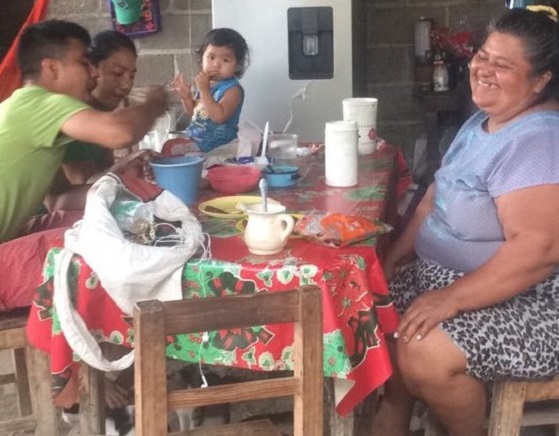Food Prepared With Love: Coming to the Table.
Raised in an era where women were finally freed from the drudgery of daily cooking chores by frozen TV dinners, all I ever knew as normal was a note on the table, when my brother and I returned home from school, describing the canned soup and TV dinner option for the evening meal.
Mom, now working her dream job in retail, felt totally confident of the balanced meal offering of a meat, vegetable, and potato. There was even dessert. We popped them into the oven and set the timer for the usual 20-30 minutes and sat in front of the TV, awaiting the delivery ding. They weren’t called TV dinners for nothing. I have to admit they were tasty and I looked forward to them.
They were fast and easy, and only lacked one thing: human love. As a 1950’s culture, we were on the brink of losing touch with our human values, but it was the frog-in-the-boiling-water syndrome. Food is life, substance and energy, and no one saw the cost of losing that awareness versus convenience.
There was a time when food was acknowledged as a sacred necessity. Animals that provided protein were honored and thanked. Food was prepared with love in knowing who would eat it — in other words, good energy.
I had not experienced that as a 1950’s child, and as they say, you don’t know what you don’t know. Later in life, I had a child, and as a single mom, was fortunate enough to live in a small unintentional community. Unintentional meaning there were no meetings, common concepts, rules to abide by, or leadership.
We were a few people of interesting backgrounds at different stages of our lives, all living in a remodeled barn. Our tribe also included a few eclectic neighbors.
No one was in charge of anything and we all had the freedom to do what we loved.
Duane loved scouring seed catalogs that arrived at the end of long grey winters. He was easily seduced by the colors and creative descriptions of heirloom tomatoes, carrots, and especially Indian corn that had no food value but was gorgeous enough to be jewelry. When the seeds arrived, he would fire up his John Deere tractor. That was definitely something a farm-boy-turned-college-professor loved.
I loved seeing him (a fairly large man) on his knees placing each seed in its special place. But for Duane that was the only part he loved. I loved weeding. There was a certain satisfaction in freeing the tiny plants from the stronger, faster growing invasives. My son loved pulling carrots right from the ground and eating them dirt and all.
All the children loved the Indian corn reveal. We oohed and aahed as we unpeeled the sheaves to see the amazing kernels of color that we had waited to see all summer. Joel loved harvesting everything before the first killing frost. He would stack it all neatly in a special storage area and we lived on baked squash all winter.
We each enjoyed the garden in our own cuisines, but we often gathered with neighbors to combine our best dishes for spontaneous communal dinners with exotic quests.
Here is where I really began to see how food is central to community. The garden was a beautiful place we all loved to invest our time and energy in, and all of us could see it from our separate living spaces. It was like a community member.
Recently, I witnessed another version of how food becomes central in how we nurture ourselves and others.
I now live in Mexico, and recently was fortunate enough to stay in a family compound of 10 people, many of them children. They are Zapotecs, a very old indigenous matriarchal society. Within the family compound, there are separate living spaces but one large communal area where activities of many kinds are constantly occurring. It is a kid playroom, dishwashing, cooking, dining, and napping room.
Although they do not grow their own food, life revolves around food in this culture. The market area is a bustling, highly condensed area of all women vendors. Only in recent years have men been allowed inside.
The day begins before daybreak, with carts mounted with loudspeakers announcing the best fresh food deals of the day driving through each neighborhood, and women begin to don traditional clothing and head to the market with baskets on heads to buy the day’s supplies to feed the family. They return with fresh fish, chicken, cheeses, and of course tortillas.
The rest of the day is spent in dicing, slicing, frying, stirring, and there seems to be no boss. Everything that needs to get done is being accomplished while children run wildly through the area or sit quietly and watch. There is no internet, no child cell phone, no toys, but there is giggling, teasing and full-on joyful interactions with all.
I watch and think about the energy. What is happening to the food prepared and shared in this way?
Somewhere between the tin foil/canned soup dinners of my childhood, community gardening and the joy of this Mexican kitchen, I have discovered human beings as opposed to human doings. And my heart and stomach are filled with joy.
***
Mariosa is a performing artist who lives in San Miguel de Allende, Mexico. You could contact her via Facebook, Instagram or email.


